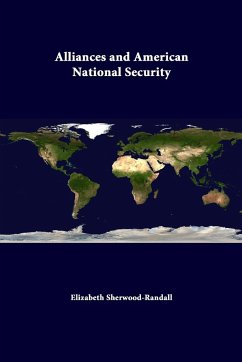
Assessing Proposals for Interagency Reorganization
Versandkostenfrei!
Versandfertig in über 4 Wochen
53,99 €
inkl. MwSt.
Weitere Ausgaben:

PAYBACK Punkte
27 °P sammeln!
US military operations in Iraq and Afghanistan caused the U.S. Government to reassess its interagency capabilities. In the wake of these conflicts, Congress held hearings in order to determine the strengths and weaknesses of the interagency process and evaluate different remedies. Numerous organizations and national security experts testified and presented their studies analyzing the interagency process and its shortcomings. Using the body of evidence presented to them, Senators Lugar and Biden made recommendations for revamping the interagency process. These studies presented compelling cases...
US military operations in Iraq and Afghanistan caused the U.S. Government to reassess its interagency capabilities. In the wake of these conflicts, Congress held hearings in order to determine the strengths and weaknesses of the interagency process and evaluate different remedies. Numerous organizations and national security experts testified and presented their studies analyzing the interagency process and its shortcomings. Using the body of evidence presented to them, Senators Lugar and Biden made recommendations for revamping the interagency process. These studies presented compelling cases for change however, their recommendations failed to consider some significant factors. Much of the research focused on developing a new organizational structure without fully understanding the environment in which these organizations operate. Additionally, the studies failed to consider organizational theory and its application to the interagency process. Instead, the recommendations focused on accountability and efficiency but failed to consider information management and coordination among and between agencies. In order to account for the numerous factors impacting interagency coordination a detailed examination of the congressional requirements, "think tank" recommendations, the environment, and organizational theory were required. Two studies provide different approaches to organizational design. Beyond Goldwater-Nichols by the Center for Strategic and International Studies approached interagency reorganization using a traditional 20th century organizational design.














